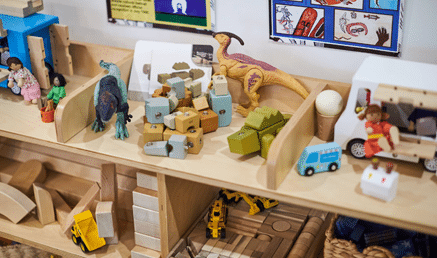
“It’s our polite nudge in the ribs to help you and your team stay organised and on task.”
This week’s subject is: Positive educator to child interactions
Element 5.1.1: Positive educator to child interactions
Responsive and meaningful interactions build trusting relationships which engage and support each child to secure, confident and included
Within your service, how is it evident that all interactions between educators and children are nurturing, respectful, responsive and inclusive, ensuring children feel supported, competent, capable and experience a strong sense of wellbeing and belonging?
Positive educator to child interactions focuses on actions that are visible and observable. Evidence of this should for most part, be evident in your everyday practice and occur naturally and organically. Positive interactions between educators and children involves Educators implementing a combination of quality practices which include:
-
- Treating each child as an individual, acknowledging their specific needs, abilities, strengths and interests
- Acknowledging children as capable and competent learners, acknowledging and encouraging their efforts and achievements, supporting them to experience success
- Being responsive to children’s individual needs by comforting them when they are distressed or assisting them when they require support and guidance
- Using a variety of tools and techniques to support effective communication with children e.g., sign language, social stories etc.
- Using their knowledge of individual children to effectively cater to their specific needs
- Adjusting the language used to appropriately and effectively communicate with children of varying ages
- Facilitating, supporting and participating in children’s play respectfully, without taking over, by responding to children’s cues
- Supporting children to contribute to and make decisions about routines and experiences that impact them
- Providing children with information and discussion about what is happening at different parts of the day
- Planning experiences and creating learning environments that support children to learn and develop independently
- Providing opportunities for children to experience success by supporting their self-help skills and allocating age-appropriate tasks/responsibilities
- Creating an environment that reflects the backgrounds of the children in care
Resources for services:
Caring for Young Children- What Children Need
Empathetic Educators and Outside School Hours Care
Using Communication Temptations to Motivate Communication
Within System7 go to Quality Area 5/ Modules 1 & 2 to submit self-assessment notes and if required, open a QIP issue if you identify any areas of improvement.
The Childcare Centre Desktop has a range of resources to assist services with positive interactions including Interactions with Children, Families and Staff Policy, All About Me-Child Introduction Form, Philosophy Development and Review Procedure, Behaviour Guidance forms and much more.
Resources, NQS Element, Regulation and System7 links
Childcare Centre Desktop – Childcare Centre Desktop
National Quality Standard – QA 5/5.1.1: Positive educator to child interactions
National Regulations – 155, 156 & 168
System7 Module – QA 5/ Modules 1 & 2
If you have any questions send us a note via the Contact page here!




